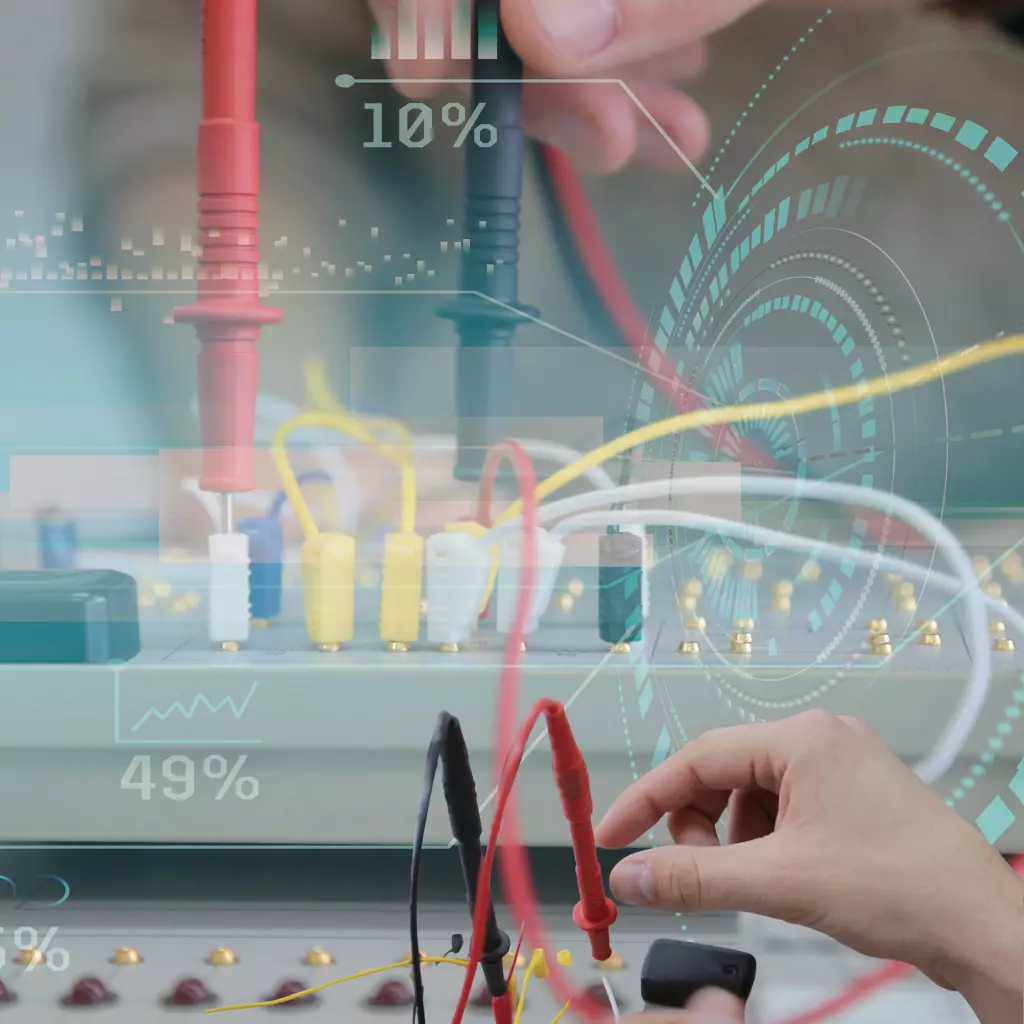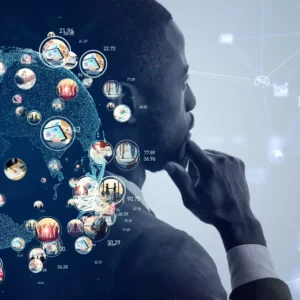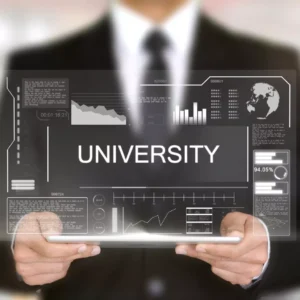
Skill & Scale
AI in Vocational and Technical Training
The vocational and technical training landscape is undergoing a seismic shift driven by Artificial Intelligence (AI) and Machine Learning (ML). With the rise of AI-driven techniques, the game is changing fast!
Stakeholders recognize the importance of creating skill-based courses, assessments, and hands-on training that will truly make a difference. It’s time to embrace the power of AI and take our learning and development to the next level!
This article into critical areas like real-world simulation, virtual labs, and predictive analytics to paint a vivid picture of this transformation.
Whether you are an educator, policymaker, or a student aiming for vocational success, understanding how AI shapes this sector is essential for navigating the new educational terrain.
Table of Contents

Arindam Roy
An Automation Consultant with 25+ years of IT Experience
Crafting Courses for the Job Market
Using AI in skill-based course design is a game-changer for aligning vocational training with real-world job market demands.
Advanced algorithms analyze labour market trends and skill gaps to help educators craft timely and relevant courses. This ensures that students are not just learning but are learning the right skills for immediate employment.
The AI-driven approach also allows for agile updates to curricula, enabling educational institutions to adapt swiftly to industrial changes. This dynamic interaction between AI and vocational training creates a seamless pathway from education to employment, making vocational courses more effective and targeted.
Precise Assessment in Vocational Settings
Machine Learning (ML) in vocational assessment redefines how we measure skill proficiency and job readiness. Traditional evaluation methods often provide a limited view of a student’s capabilities.
ML algorithms, however, can analyze complex patterns of student behaviour, work samples, and even real-time problem-solving skills to offer a more holistic, precise evaluation. This heightened accuracy enables educators and employers to pinpoint specific areas for improvement and tailor subsequent training more effectively.
As a result, the vocational training landscape becomes increasingly efficient, equipping students with the exact skills and knowledge they require for career success.
Real-world Simulation for Hands-on Learning
AI-driven simulators are becoming essential tools for technical training, providing immersive, real-world experiences without the risks or costs associated with actual fieldwork. These simulators leverage artificial intelligence to create highly realistic scenarios, from automotive repair to surgical procedures, ensuring students gain practical skills essential for their vocations.
Furthermore, AI algorithms can adapt these simulations in real-time based on student performance, offering challenges and assistance as needed. This marriage of AI and hands-on training bridges the gap between theoretical knowledge and practical skills, promising a more competent and job-ready workforce.
Engaging in Virtual Lab Experiences
Virtual labs, augmented by AI, are revolutionizing the hands-on component of vocational education. These AI-enhanced environments simulate real-world labs, allowing students to practice technical skills in a safe, controlled setting.
Their interactive nature sets them apart: AI algorithms adapt to the learner’s actions, providing real-time feedback and dynamically changing lab conditions to challenge the student. This gives a more engaging, informative, and practical experience than traditional lab work. Such virtual labs are
- a critical aspect of modern vocational education,
- offering students the chance to apply theoretical knowledge in realistic scenarios,
- thus making the learning experience profoundly effective and immersive.
Predicting and Ensuring Vocational Success
Predictive analytics are playing an increasingly pivotal role in the vocational training ecosystem.
Educational institutions can accurately forecast individual student success by utilizing AI to analyze a wide array of data—from student engagement and assessment scores to market demand for specific skills. These predictive models identify students at risk of falling behind and offer tailored interventions to help them succeed.
The intelligence gleaned from predictive analytics helps refine course design, provide personalized support, and make real-time adjustments, ensuring that vocational training is not just an educational pathway but a trajectory towards assured employment.
Customizing Training for Diverse Vocations
Tailoring technical training with AI is especially crucial in the diverse field of vocational education, where one-size-fits-all approaches are increasingly obsolete.
Artificial Intelligence enables a personalized learning journey by continuously assessing a student’s skills, preferences, and progress. Using these insights, customize course material, hands-on simulations, and assessments for various vocations, such as healthcare, automotive technology, and IT.
AI allows educators to move beyond generic training modules to create precise curricula that meet individual learning needs and job market demands. As a result, students are better prepared for successful careers in their chosen vocations.
Instant Support in Technical Courses
AI-powered chatbots are becoming indispensable for providing immediate, round-the-clock assistance in technical courses. These intelligent systems are programmed to answer queries, clarify doubts, and even offer step-by-step solutions to technical problems, enhancing the learning experience.
Using chatbots for vocational course assistance offers a scalable way to provide personalized support to each student without overwhelming human instructors. These AI-driven platforms are becoming increasingly sophisticated, capable of understanding complex questions and providing relevant answers.
This instant support mechanism ensures that students stay engaged and are less likely to fall behind, optimizing their path to vocational success.
Merging Theory and Practice with AI (VR and AR)
The convergence of theory and practice in vocational training receives a remarkable boost from AI technologies. Traditionally seen as separate realms, AI-driven solutions integrate theoretical concepts with hands-on applications seamlessly.
Virtual reality (VR) and augmented reality (AR) powered by AI enable students to engage with complex ideas in simulated real-world scenarios. This immersive fusion enhances understanding, making abstract theories tangible and relatable.
By bridging the gap between classroom learning and practical execution, AI empowers students to navigate intricate challenges confidently. As technology evolves, this harmonious blend promises a new era of well-rounded, job-ready vocational education.
The AI-driven Vocational Shift
Are you aware of the significant impact that artificial intelligence is having on vocational training? Technological advancement is transforming how courses are designed, delivered, and assessed. It’s a fascinating transformation that’s happening right before our eyes!
From predictive analytics that guide students toward success to AI-driven simulators that offer realistic hands-on training, AI encompasses every aspect of the vocational learning journey. This shift is not merely incremental but transformative, impacting the quality and nature of vocational education.
As AI technologies become more advanced and accessible, they will be increasingly integrated into vocational settings, pushing the boundaries of what is possible and redefining our understanding of practical, job-ready training.
The Blueprint for Future Vocational Education
Discover the exciting possibilities of technical training in the age of AI – where a multidimensional blueprint is being meticulously crafted to shape the future of learning.
This blueprint combines AI in skill-based course design, ML-driven vocational assessment, AI-driven simulators, and predictive analytics to form a comprehensive framework. By aligning education with the evolving needs of industries, this blueprint ensures graduates possess precise skills demanded by the job market.
AI’s role in virtual labs, tailored training, chatbots, and hands-on experiences paints a holistic picture. As vocational training undergoes this AI-driven revolution, the blueprint sets a clear path toward a workforce empowered with expertise that’s relevant, agile, and harmoniously aligned with industry demands.
Conclusion
In the dynamic landscape of vocational and technical education, AI has emerged as the guiding light, illuminating pathways to unprecedented success. From personalized course crafting to immersive simulations and predictive analytics that steer individuals towards excellence, the synergy between AI and education is reshaping vocational training.
As we delve into this AI-powered realm, we are left pondering: How will our journey through the evolving educational landscape transform our industries, careers, and approach to learning? The future of technical training with AI is not just a vision but a vibrant reality, beckoning us to explore, embrace, and thrive in this new era.
Related Articles
- Beyond Books: AI in Shaping Modern Curricula
- AI in Educational RND: Pioneering Paths
- Tailored Teachings: AI in Support Need Education
- Smart Schools: AI in Educational Management
- Intelligent Intake: AI in College Admissions
- Never Stop Learning: AI’s Boost in Adult Education
- Digital Desks: AI’s Footprint in Modern Classrooms
- Virtual Varsity: AI in E-Learning Platforms
- Reimagining Rules: AI’s Influence on Education Policy
- Smart Choices: AI in Global Education Counselling
- AI in language learning apps: Chatbots to Culture
- AI-Driven Tutoring Platforms: 24/7 Tutors
- Play to Learn: AI Transforming Educational Games
- Scoring with Systems: AI in Exam Prep
- Tiny Tots, Big Tech: AI’s Role in Preschool Education
- Classroom Companions: AI Tools for K-12 Education
- AI-driven EdTech Solutions: Revolutionizing EdTech Investment and Engagement
- Learning Never Stops: AI’s Impact on Continuous Education
- Campus to Computer: AI in Virtual Learning in Higher Education
- Digital Transformation in Education: 5 Areas Where Process Automation Takes the Lead
- Other Articles on AI Usage in Education
- Other Articles on AI usage in other industries























